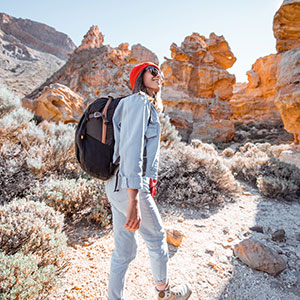Day 1: Ourense to Lugo, following the Miño river (Galicia)
Distance:125km Journey: By car / Duration: 1 hours 45 minutes
We suggest you start your journey in northwest Spain, in the Ourense, one of the four provinces that make up Galicia. It is essential to visit the capital before heading to Lugo. The city of Ourense is inextricably linked to the River Miño, with eight bridges crossing over it. The Roman Bridge is the city's hallmark and the hot springs are one of its greatest attractions. How about a relaxing bath before starting your drive?Head to Campo da Feira and walk along the Thermal Walk. It spans around three kilometres along the right bank of the river and you can give any of the following a go at any time of the year: The public pools of hot mineral-medicinal waters of A Chavasqueira–Outariz (about 41º); the O Tinteiro fountain (43º), with water indicated for dermatological problems; the public thermal pools of Burga do Muíño das Veigas (between 65º and 72º) and, finally, those of Outariz (61º), with water ideal for relieving rheumatism and osteoarthritis.Taking the N-120 highway, Monforte de Lemos, one of the most important towns in inland Galicia, is less than 50 kilometres away. Then, just over 70 kilometres away, in the upper Miño basin area, we recommend visiting the Parga-Ladra-Támoga natural space, which forms part of the Terras do Miño Biosphere Reserve. You will be just 10 minutes away from resting at your next destination: Lugo.









